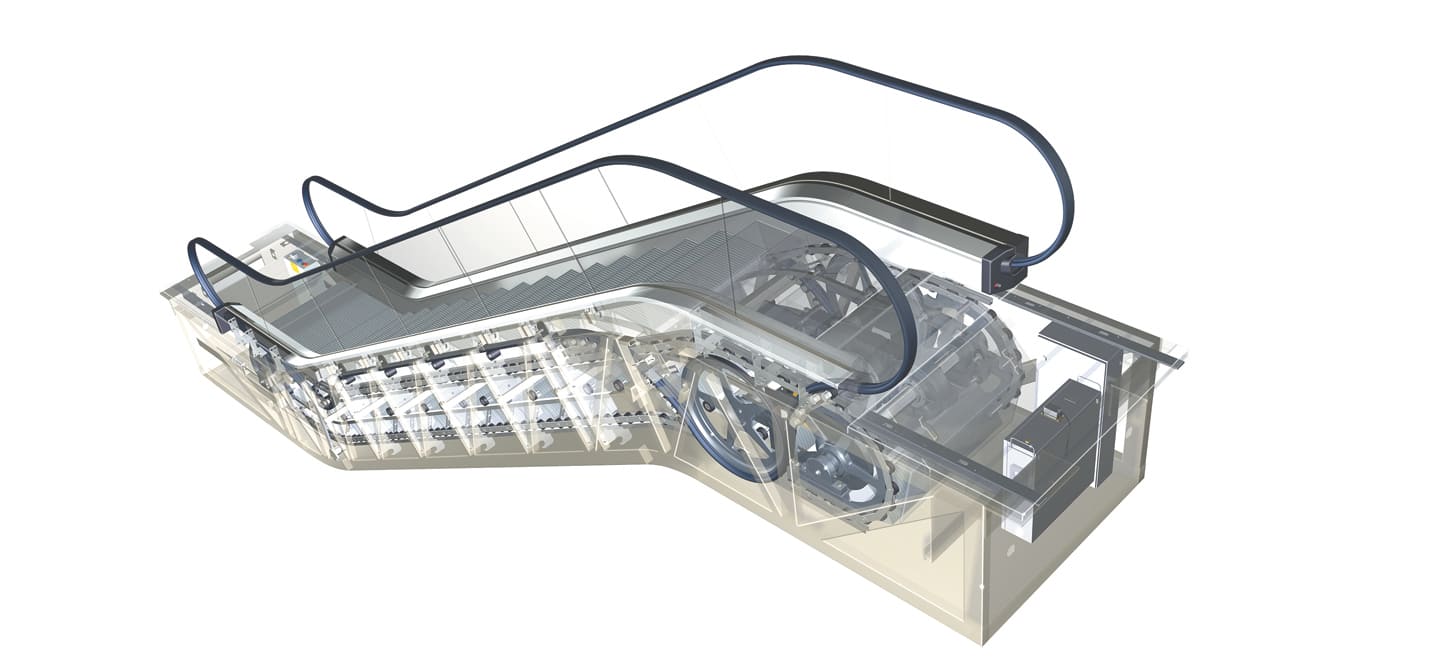Are you interested in KONE as a corporate business or a career opportunity?
Corporate siteOn an average, an escalator in the United States, transports about 12000 people every day. That’s nearly 3 million people every year. Since the country is home to roughly 35,000 escalators, it means they transport the equivalent of 105 billion passengers, every year. If these mindboggling numbers - quoted by the National Elevator Industry Inc. (NEII) - are anything to go by, the evolution of escalators is unstoppable.
Brainchild of American inventor Charles Seeberger, who created the world’s first step-type escalator (hence the name – which combines the Latin word “Scala”, meaning steps, and the word elevator), it debuted at the Paris World Fair in 1900 and won first prize. In the 117 years since, the escalator has undergone many improvements. It has transformed not only in length but also in shape. While extra-long escalators cover hundreds of feet, arched and spiral escalators bring style and design to the traditional concept. Nevertheless, its basic function remains the same - to be a continuous moving stairway that helps people move up or down vertical distances.
Today’s escalators are generally constructed using a combination of steel, aluminium and plastic. Whilst some older ones have had components made from wood, these are rare considering that wood is not very durable. And durability is of prime importance, when it comes to escalators. Primarily because they generate an average lift force of 4500 kilograms and are in constant motion.
Passenger travel at speeds of 0.5 meters per second in most retail and airport facilities, while underground escalators may travel at higher speeds of about 0.75 meters per second. It is interesting to note that this massive machine is entirely safe and reliable, if used correctly.
Passenger behavior is often considered the cause of 64% of all incident on escalators. People often drop their bags, are busy on their phones, or simply not paying attention, which may cause them to lose their balance and leads to accidents. Despite these mishaps, escalators are a proven machine to get people from A to B. With increasing technological advances the future of escalators could test the limits of our imagination.
GUINNESS WORLD RECORDS FOR ESCALATORS:
Shortest escalator:
Moving walkway at Okadaya More’s Shopping Mall in Japan with a vertical height of 83.4 centimetres or 2 feet and 8 inches.
Longest elevator:
Hong Kong’s Central Hillside Escalator Link which covers 800 meters or 2,624 square feet.
Most escalators in a metro system:
The metro subway system of Washington DC has a system of 557 escalators maintained by 90 technicians.
Longest metro escalator:
The Admiralteyskaya station in St. Petersburg in Russia has four parallel escalators each with a rise of 68.6 meters or 225.07 feet, containing 770 steps.
The world’s first arched escalators:
The Elbphilharmonie concert Hall in Hamburg, Germany. The two arched escalators by KONE are more than 80m in length and climb to a height of 21.43m.

